Author: Saint Louis Zoo Manager of Behavioral Sciences Eli Baskir
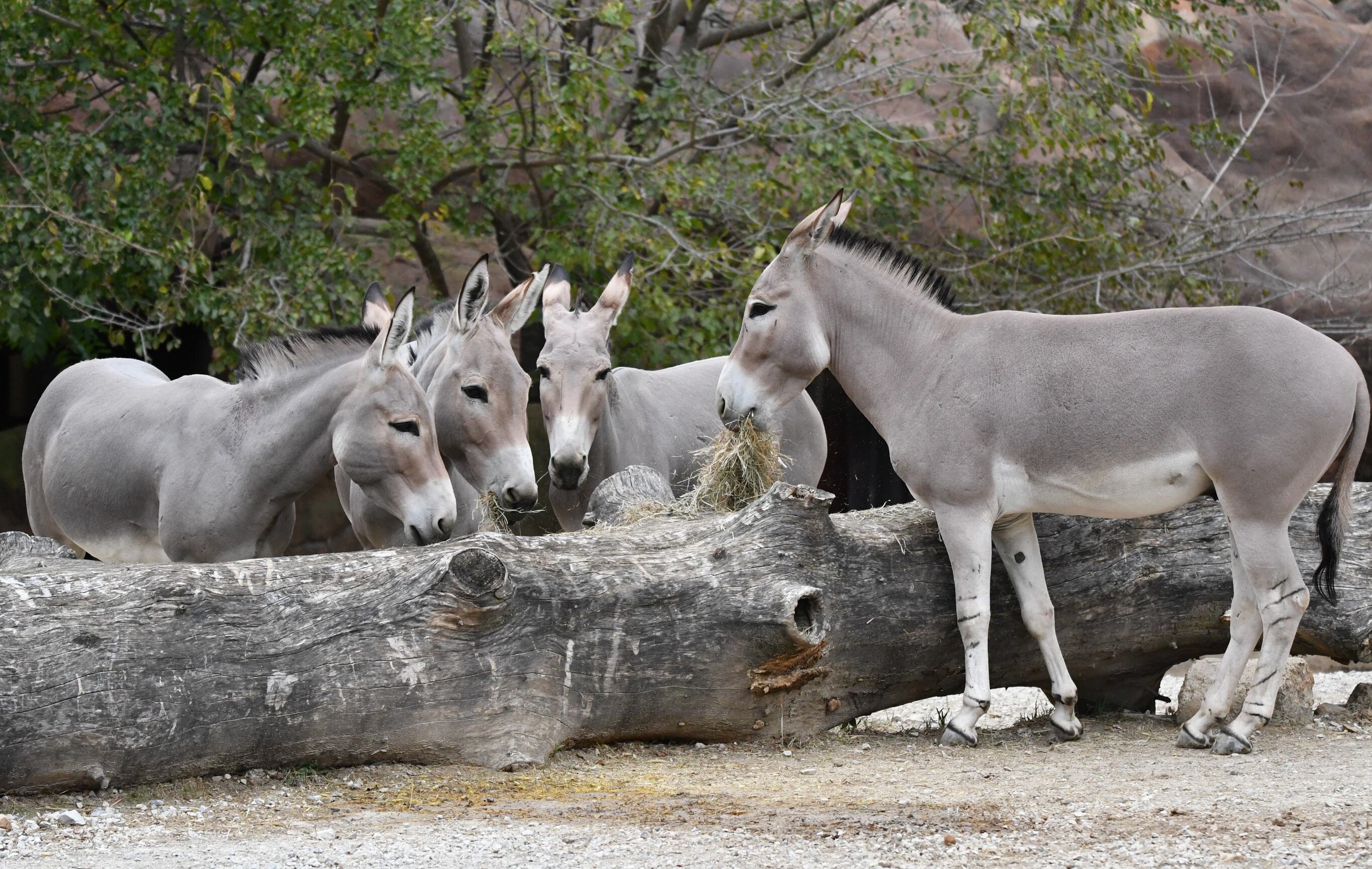
For almost a decade, teams of Animal Behavior Research interns collected hours of live data nearly daily from our herds of Somali wild asses and Grevy’s zebras. These students carefully recorded which animals were near each other as well as their interactions, whether friendly or aggressive. Certain animals seemed to spend most of their time together, almost to the exclusion of other herd members. We have been using social network analysis to examine these observations and answer the question: Could equids (horse-like animals) have best friends?
Animal sociality describes how animals assemble, and it varies among and within species. Lions and western lowland gorillas live in groups with one (or few) males and many females, but some male gorillas (like at our Zoo) form multi-male bachelor troops during transitional periods when they leave their home groups. In contrast, chimpanzees live in multi-male/multi-female groups with lots of cliques and politicking; orangutans are usually solitary. Details of these social relationships can be used to determine social hierarchies, examine mate choice and compatibility, and better understand group cohesion.
Besides revealing day to day intrigue, studying social behaviors and affiliations can improve our understanding of certain species. For example, while African wild asses were historically domesticated (and are ancestors of the domestic donkey), Grevy’s zebras never were domesticated. Both species live in similar environments and have ostensibly similar social structures. So, why was one domesticated and not the other? Why do we see donkeys pull carts and never zebras? Perhaps the answers have to do with their sociality.
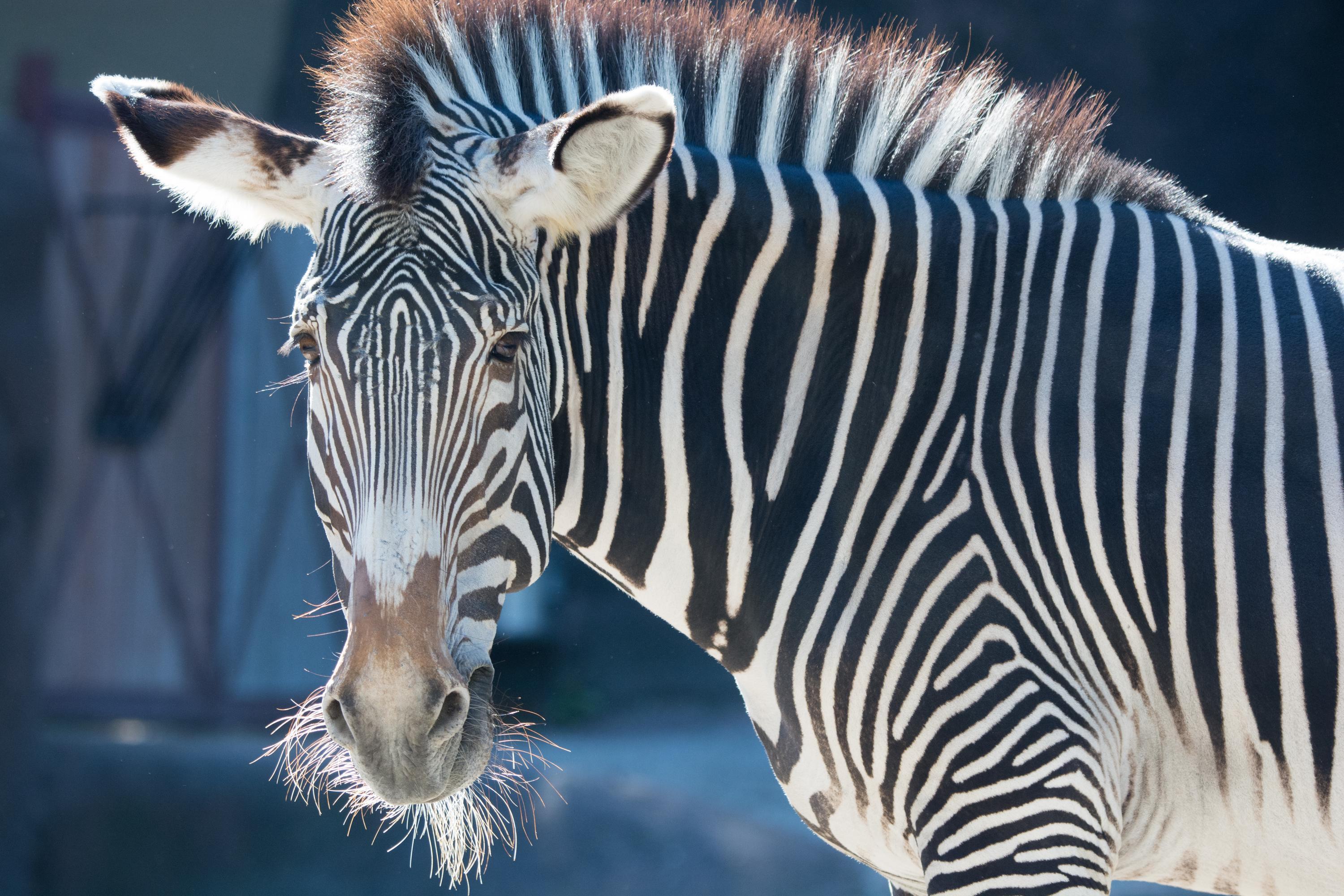
As part of a study in collaboration with Washington University, we are investigating the social networks of the equids at the Zoo to learn more about the species’ social qualities. Are African wild asses more social than Grevy’s zebras, and could that sociality have contributed to their domestication? Or, if asses are more sociable, is it because they were domesticated and not the other way around? Small herds of both species travel through arid areas with limited resources, requiring them to spend considerable time and energy searching for food and water. However, animals under human care are provided with abundant high quality food and water, possibly freeing up time and energy to engage in other behaviors, including social activities, and reveal sociality that is not often seen in the wild.
To begin this research, observers recorded which herd members were together and for how long. Social network analysis was used to determine whether the amount of time specific animals spent with each other was significant. Preliminary results show that Somali wild ass herd members at the Zoo do not spend equal amounts of time with every other female and instead have consistent preferences for certain partners. We are still investigating Grevy’s zebras and cannot yet determine how different their sociality is from the asses.
The pictured example networks seen below show three years of observations from our Somali wild ass herd. In the diagrams, each animal is represented by a red circle and an identification number. Animals with thick lines between them were observed more often together than animals with thin lines, and larger circles are animals with stronger affiliations across all herd members. Almost all of the animals had been housed together prior to these observation years and some are related: 1 & 19 are offspring and mother, respectively, and females 19, 20, 21 are sisters.
In the first year (2010), mother 19 and yearling foal 1 spent the most time together, with relative newcomer 485 on the social outs.
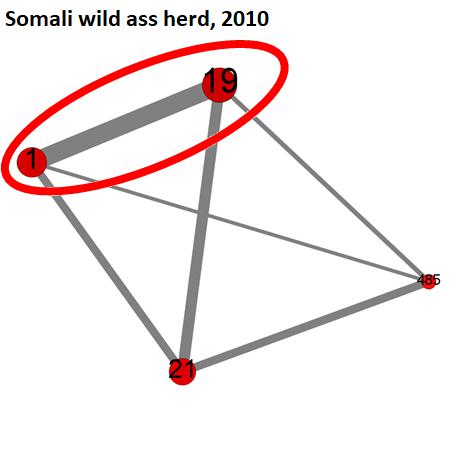
Two years later, foal 1 had moved to another zoo while a sister of 19 & 21 (#20) rejoined the herd after a couple of years away; 485 remained with the herd across both years. This 2012 network showed two clearly noticeable pairs: where 19 and 21 and 20 and 38 spent a lot of time together, but 485 was still mostly by herself.
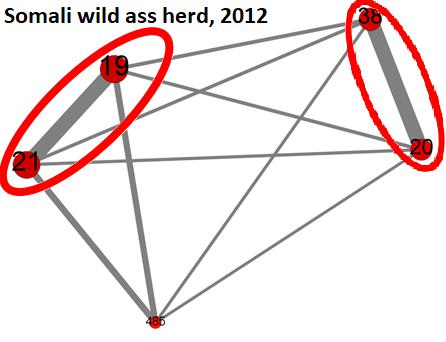
In the following year (2013), however, 485 joined the company of 19 & 21 and was often observed in their company.
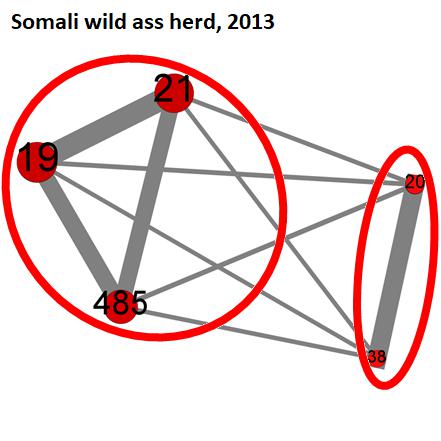
We are still completing our analysis, but the information from this and other studies continues to provide important insight into the lives of our animals. Analytical tools like social network analysis help quantify and bring attention to details that may otherwise go overlooked. We are looking forward to applying these techniques to previous studies and examining with fresh eyes the sociality of a variety of species here at the Zoo.

